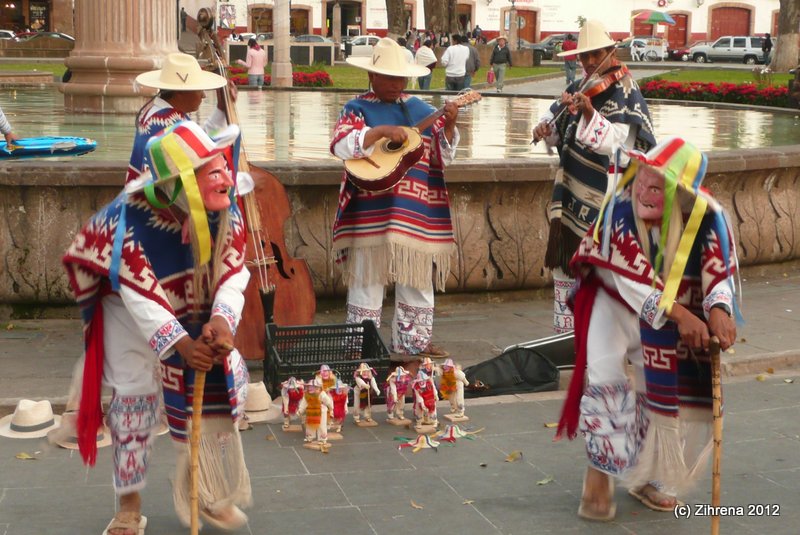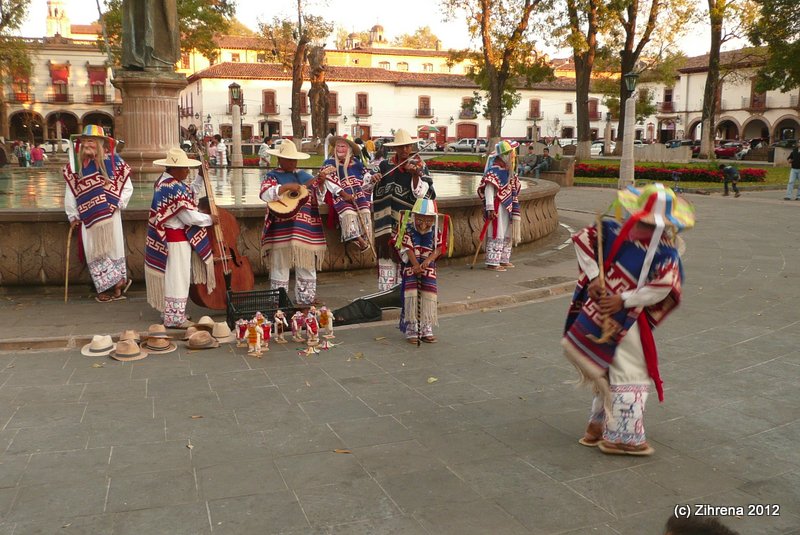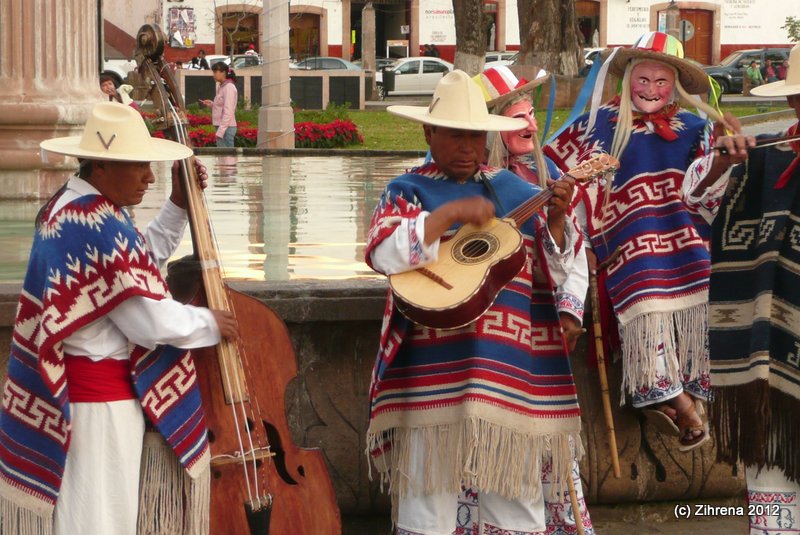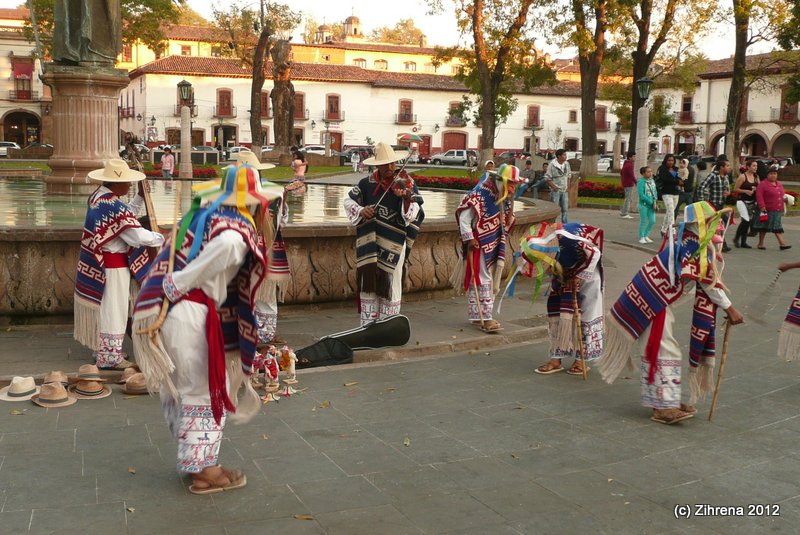We often like to get out of Zihua town for a couple of days, especially in hot weather, and spend time in the cool mountains of Michoacan, in Uruapan or Patzcuaro, where the nights and mornings are usually cool (or cold!) and the smells of wood smoke and resin are in the air. It’s a great break from our idyllic beach life to scout out the arts and crafts in the towns that line the shores of Lake Patzcuaro. You can find carved and exquisitely painted wood furniture; paper mache figures; hand-crafted candles; fine, hand-decorated ceramics and clay pottery; colorful woolen and cotton textiles; basketry and woven straw crafts; masks; and metalwork. The trip by car takes no more than three hours from Zihuatanejo, and gives you a taste of a region of Mexico totally different from the beach scene.
Often in the large plaza in Patzcuaro, Plaza Vazco de Quiroga, you can watch small family troupes of dancers and musicians perform the regional “Danza de los Viejitos,” or Old Man’s Dance, which dates back to times before the conquest. Male dancers aged six or seven years and up dress in the traditional regional costume of the area: colorfully embroidered unbleached white cotton shirts and pants, serapes, and hats festooned with ribbons. They sport crude sandals with flat, hard, wooden soles. On their faces they wear masks made of corn stalks, wood, or clay fashioned to look like old and toothless but gaily-smiling men. As they mill silently around on the square getting ready to dance, the facial expressions on their masks look weird and incongruous, and they make you want to grin stupidly back at them. Each man carries a rough, hand-carved cane.
The movements of the dance are, at first, those of old men. They start out dancing stiffly, each leaning heavily on his cane, stumbling and shuffling his feet, holding on to his aching back. As the dance progresses and picks up speed, the old men, one by one, seem to shed their years and their aches and pains and become spry again. They clack their sandal soles loudly and energetically on the ground and pound their canes, which miraculously no longer seem to be needed to hold them up. Occasionally one or the other of them will suddenly succumb once more to the maladies of his aging body and begin to collapse in coughs and exhaustion, only to be helped up again by his companions. The dance winds down when finally they all are overcome again by their ages, and they shuffle unsteadily away to the dying music.
See http://www.michoacan.gob.mx/index.php/36-temas-y-ciudadanos/turismo/tradiciones/patzcuaro/150-danza-de-los-viejitos for more info.
Patzcuaro, Michoacan, Mexico.



